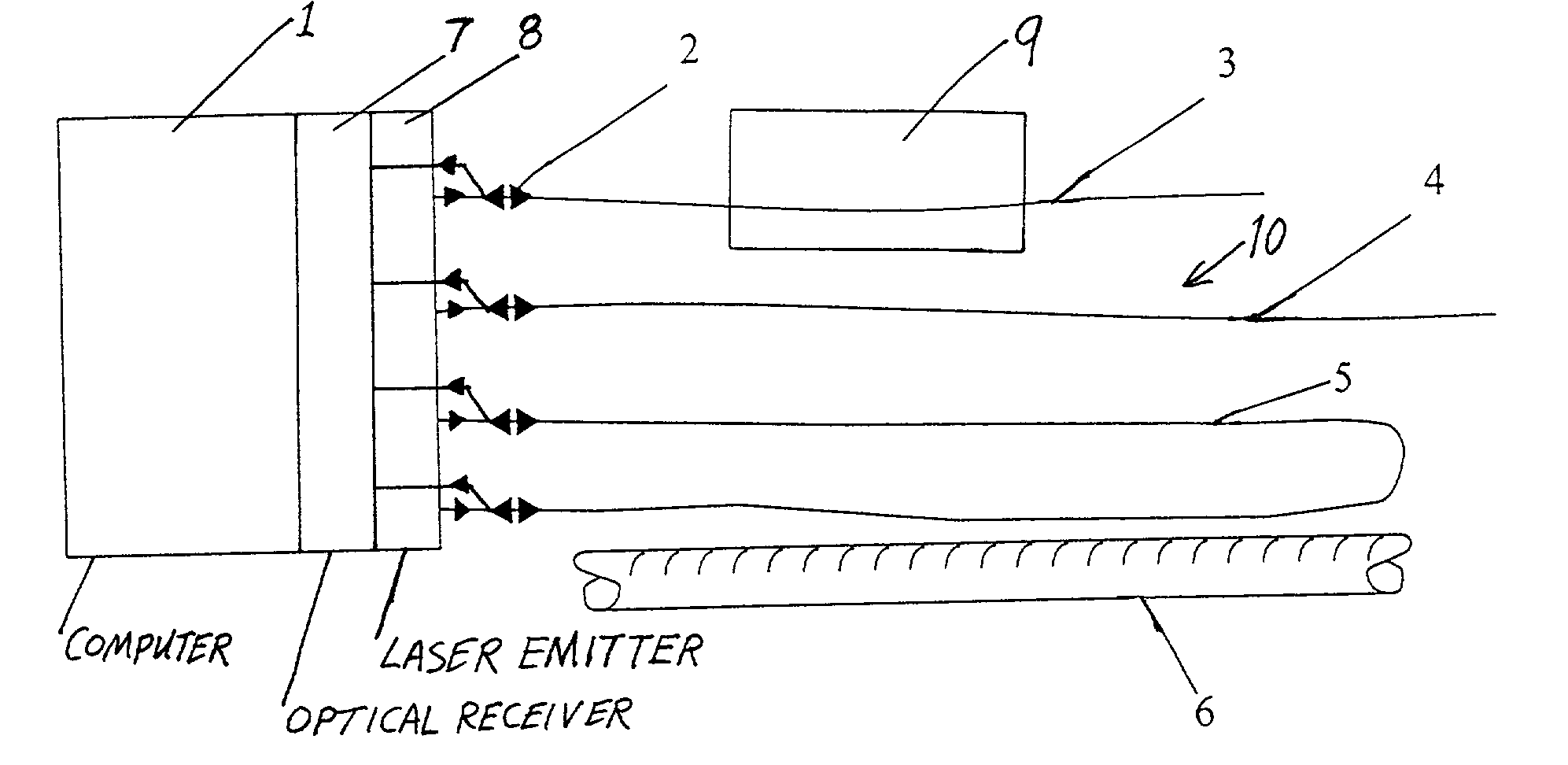Method using an optical signal for detecting overheating and fire conditions in an aircraft
an optical signal and aircraft technology, applied in the direction of optical radiation measurement, fire alarm radiation actuation, instruments, etc., can solve the problems of reducing the precision affecting the accuracy of the sensor operation, and requiring a rather complicated and costly manufacturing process for sensors
- Summary
- Abstract
- Description
- Claims
- Application Information
AI Technical Summary
Benefits of technology
Problems solved by technology
Method used
Image
Examples
Embodiment Construction
[0025] FIG. 1 schematically shows a general overview of a monitoring arrangement and sensors connected thereto for monitoring the temperature of a monitored area so as to detect an overheating or fire condition in the monitored area. The general term "overheating condition" includes a fire condition. The monitoring arrangement includes a computer 1 connected to an optical receiver and a laser source or emitter 8. The sensors include three representative sensors 3, 4 and 5 that are each connected via an interface 2 to the optical receiver 7 and the laser emitter 8, such that the laser emitter 8 can selectively feed a laser pulse through the respective interface 2 into the respective sensor 3, 4 and 5, and so that the optical receiver 7 can receive return or reflection pulse from the respective sensor 3, 4 or through the associated interface 2. The laser emitter 8 is connected to the computer 1 to be controlled and selectively actuated by the computer 1. The optical receiver 7 is conn...
PUM
| Property | Measurement | Unit |
|---|---|---|
| temperatures | aaaaa | aaaaa |
| temperature | aaaaa | aaaaa |
| reflection | aaaaa | aaaaa |
Abstract
Description
Claims
Application Information
 Login to View More
Login to View More - R&D
- Intellectual Property
- Life Sciences
- Materials
- Tech Scout
- Unparalleled Data Quality
- Higher Quality Content
- 60% Fewer Hallucinations
Browse by: Latest US Patents, China's latest patents, Technical Efficacy Thesaurus, Application Domain, Technology Topic, Popular Technical Reports.
© 2025 PatSnap. All rights reserved.Legal|Privacy policy|Modern Slavery Act Transparency Statement|Sitemap|About US| Contact US: help@patsnap.com


